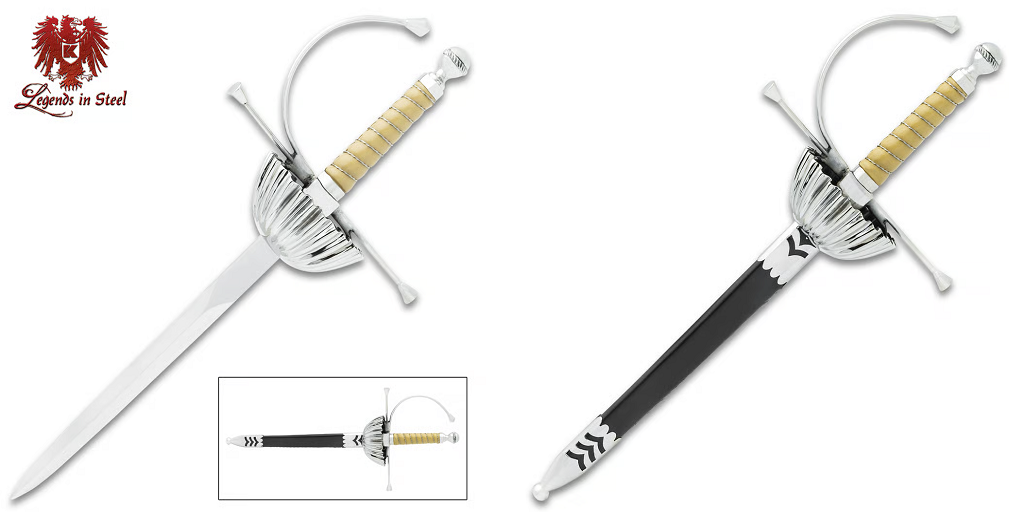A rapier is a type of sword with a long, thin blade and a protective hilt, designed to be wielded in one hand, and most practical for thrusting maneuvers.
This short post will break down the features of a rapier as described.
The Blade
Most rapiers have long, thin blades with a double edge. They can be fullered by usually they are not because they are too thin; instead, they have a cross-sectional profile that is diamond shaped; the raised ridge that runs the center of the blade stiffens it which enables it to withstand hard thrusting maneuvers better without buckling or snapping.
The rapier is long-bladed, with a blade that is typically quite long, between 36” and 48”, though there is some variation on either end of this. The longer the blade, the better reach that affords the wielder for aggressive thrusts.
As for profile, the rapier is what we might call “needle pointed” if it were a knife, or perhaps a stiletto. This is a very thin, fine point that, while it can’t withstand a lot of torsional or dimensional stress, can withstand a great deal of compressive force without bending. This, like the other features of a rapier, make it ideal for thrusting and lunging attacks.
Moreover, the blade is very thin and light; the center of balance of a rapier is very far back towards the hilt, if not in the hilt itself. This makes it very light and responsive in the hand, with a tip that points readily where the wielder needs it. These features also, like the others here, enable rapid, quick, authoritative thrusts and lunges.
The drawback here is that rapiers are terrible for slashing maneuvers, though they are effective thrusting swords. They do possess double-edged blades, but the blade is too light and too thin, and does not carry enough mass to make it an effective slashing tool.
The Hilt
Now let’s take a closer look at the hilt of a rapier. Most rapiers have a type of hilt known as a basket hilt, so called because it forms a protective “basket” around the user’s hand. Some have a swept hilt or a cup hilt.
This protects the hand from an opponent’s attacks, but it also adds weight to the overall design of the sword, further improving its balance and use as a thrusting weapon.
Some rapiers are made with fairly basic basket hilts, others are completed with decorous, highly ornate hilts that boast fancy wire and metalwork.
Most rapier hilts also possess a thin crossguard that, together with the other metal elements of the basket hilt, protect a user’s hands and improve control and balance.
On the back end of the hilt is the pommel, a metal ball or other mass through which the tang of the blade passes before it is secured.
On top of the obvious mechanical function of securing the blade, the pommel serves two other functions; it adds weight, improving the balance and handling of the rapier, and it also can be used as a striking weapon – although realistically, it is unlikely it was ever commonly used as one.
Extras: What Is a Main Gauche?
One thing to note is that sometimes those who carried a rapier sword carried another smaller dagger known as a main gauche, which was wielded in the left hand and used as a defensive weapon to parry the blows of an opponent before a counterstrike could be delivered with the rapier.
Where Can You Get a Rapier?
Looking for a battle-ready rapier sword that can stand up to the rigors of real swordplay? Or are you just looking for a wallhanger to enhance the aesthetic of your study?
Either way, check out BudK. They carry a wide range of knives, swords and daggers and many of their patterns are rapiers.
For more information about Sword Cane and Machete Knife Please visit: BudK Worldwide Inc.
